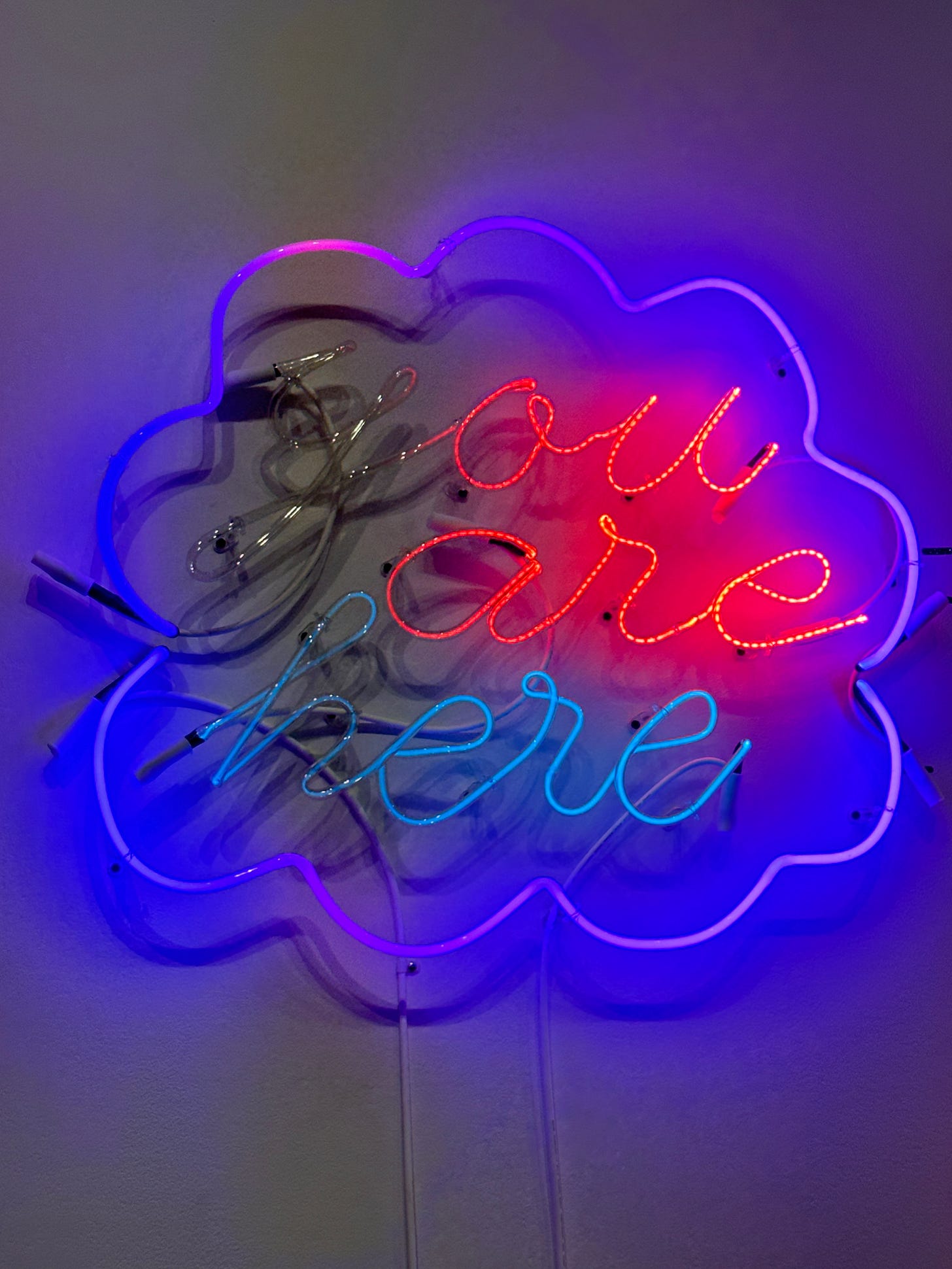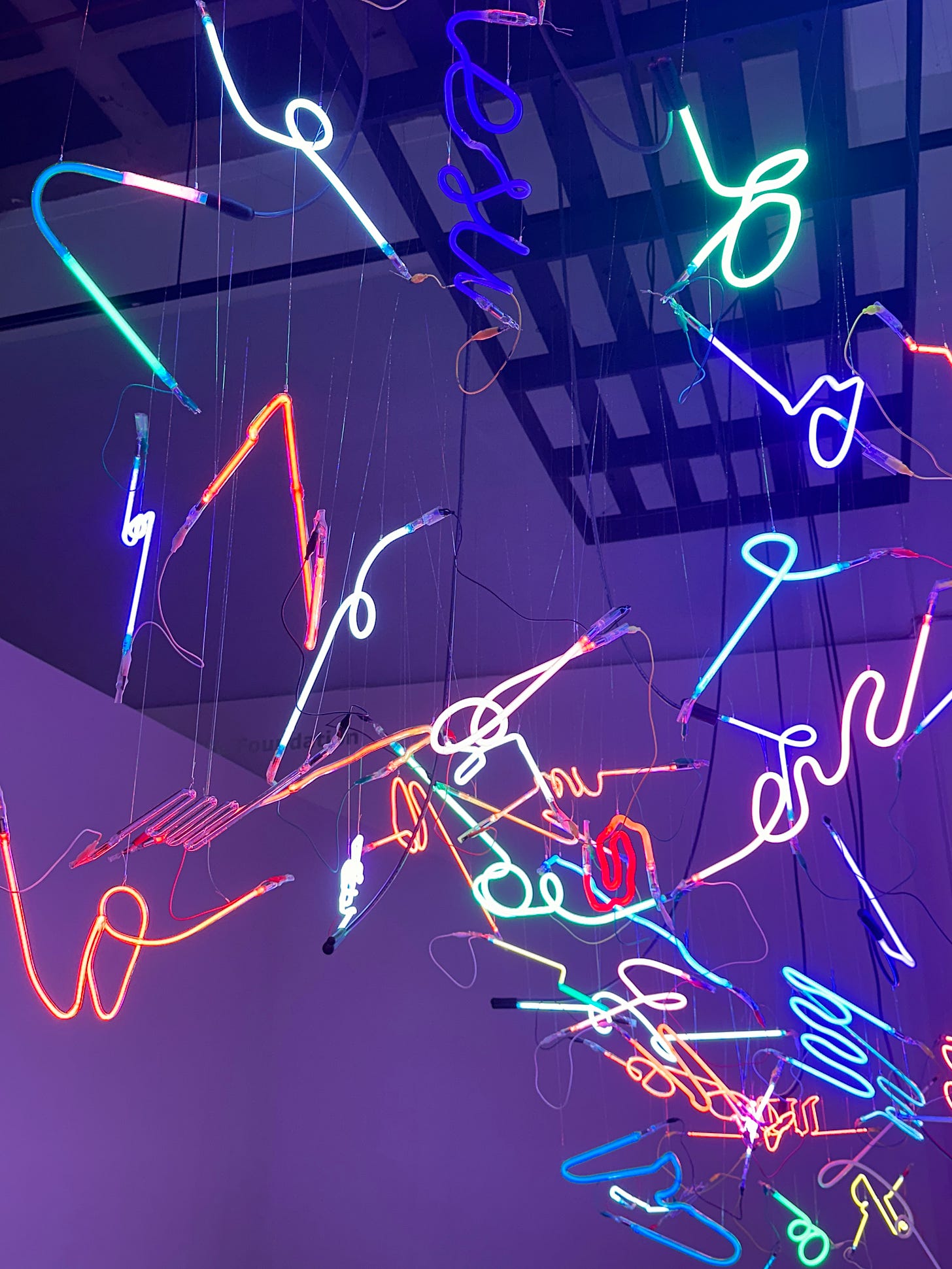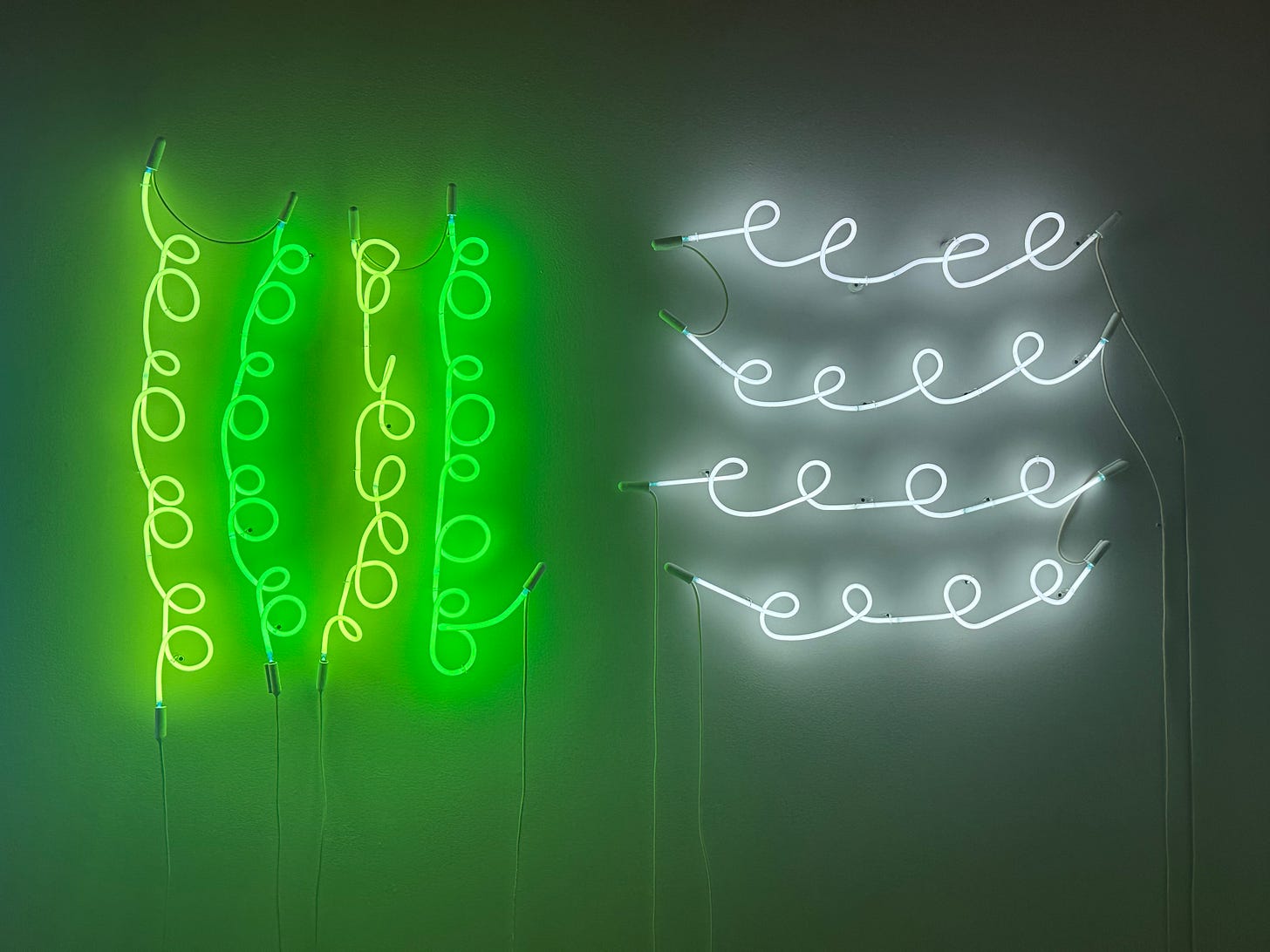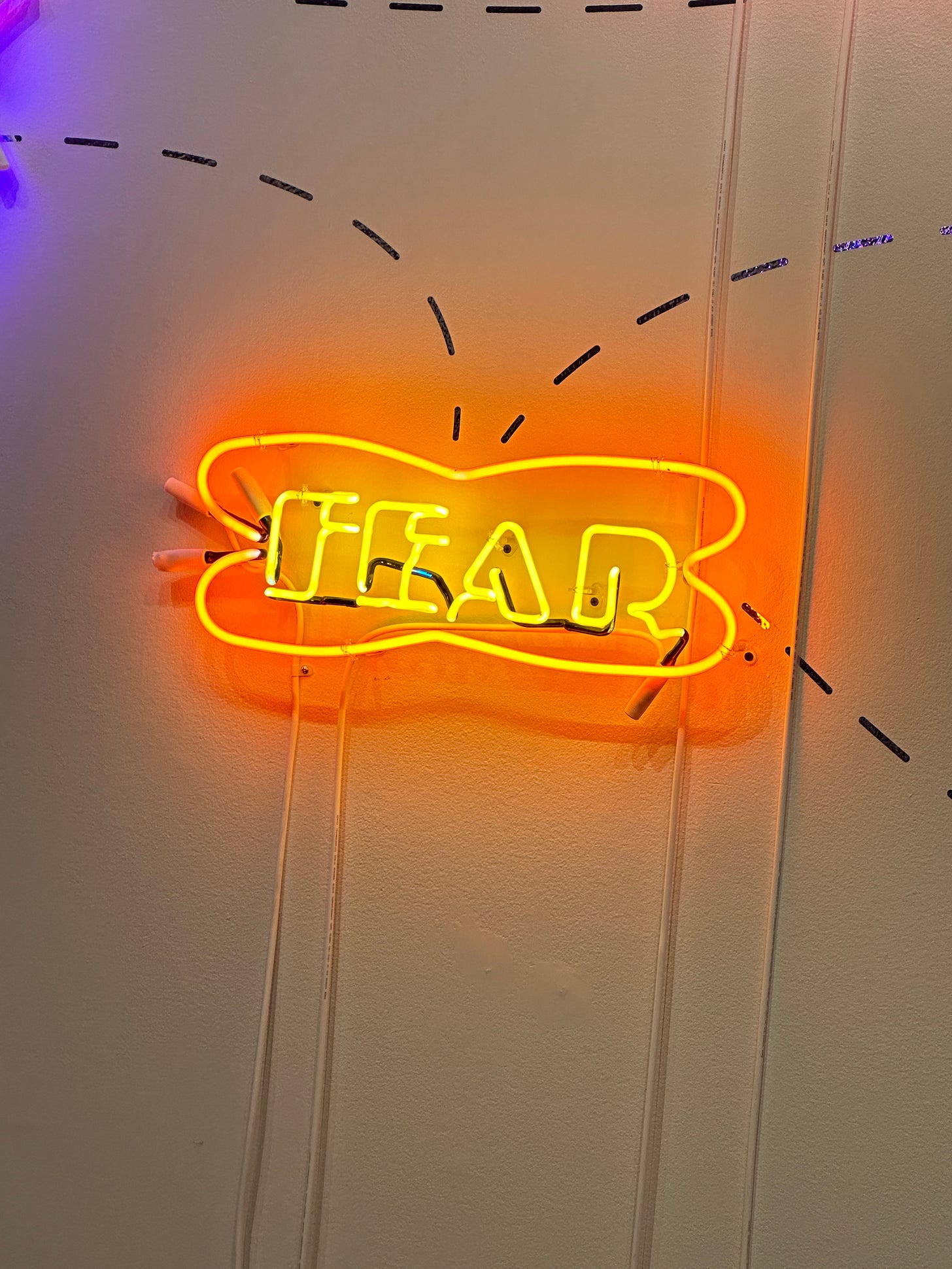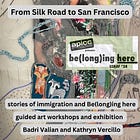Neon Art as Mindfulness, Strength, and Craftivism
She Bends Neon Art Exhibit at Museum of Craft and Design
San Francisco’s Museum of Craft and Design is a beautiful space in a fun location with a terrific museum store and exhibits that never fail to inspire my imagination. And even with all of that, my favorite part of the space is always the back room, the room that some people might consider an afterthought but for me is the highlight, the room where you can go to decompress, gather your thoughts, have a quiet conversation, answer community question prompts, and/or engage with a simple craft activity related to the exhibits. So imagine my delight when the room lit up with fire as two boldly creative women bent neon into art for a demo at the opening event. There is a lot that I love about the current exhibit - Neon as Soulcraft by She Bends - but this was the most magical, mesmerizing part of the opening. It captured so many of the things that I love about where art meets psychology.
She Bends: Neon as Soulcraft
This exhibit is a celebration of work created in three neon art residencies across the United States. It features the works of art as well as displays of the tools of the trade alongside information about the craft itself and the questions it creates.
From the press release:
Guest Curator Kelsey Issel notes, “Learning how to make neon, or any embodied craft for that matter, has so many residual implications – material responsibility, problem-solving, mindfulness. We wanted to use this opportunity to guest curate at MCD to create access to the neon trade for young adults to be taught not only by skilled neon technicians but also by women artists, who have dedicated time to this craft beyond its commercial purpose. The experimentation and meditation on this material performed by artist benders is not only pushing the boundaries of the medium but has social benefits that we are very excited about.”
Kelsey Issel co-curated the exhibit with Meryl Pataky, both from She Bends.
“Founded to support historically marginalized craftspeople in the neon trade, She Bends is dedicated to building a more equitable future for neon art through public education, curatorial projects, and artist programs that foster diversity and sustainability.
These program push the boundaries of the neon medium beyond commercial signage into the realm of fine art.”
Neon Scrap Quilt
Walking into the exhibit, this piece immediately captured my attention. Bits of neon hung in space creating a large scale installation that drew me in. I stepped forward and looked at the individual pieces. I stepped back and took in the whole. “But what is it?” I wondered. And I loved when the answer revealed itself:
I am always more in love with process than product, the way that it heals us, the questions it creates and answers it reveals, the opportunity to explore how our own reactions impact our art making and then either adapt the art to our own psychological needs or find flexibility in our minds to adapt to the art. Bring this together in crafting with others and/or exhibiting works in public and you bring this to the larger community.
The Process of Building a Safe Space
The image above is from the installation titled The process of building a safe space, a titled that “refers in equal parts to a protective learning environment and to the bias against women in the field.” I love this.
The Simple Ingredients and Complex Chemistry of Neon Art
I invited a friend with me to the opening exhibit because he’s a longtime appreciator of neon art and I knew that he could explain some of the elements to me to get me thinking more deeply and appreciating more fully all that I was seeing. Something he said that really struck me was that all neon art consists of essentially the same three things: glass, electricity, and gas (neon and mercury). The same three ingredients over and over in different configurations.
More than this, though, I was struck by both his explanation and the demo by how precise it all is, how fragile, how dangerous, how powerful. It is strange to think of this as a male-dominated industry, because although it requires strength, it also requires delicacy. The danger lies in the high voltage electricity needed to excite the gas inside the glass tubes, which, if not handled properly, can cause severe electric shocks. Additionally, the glass itself must be perfectly sealed and intact; any flaws can lead to gas leaks or the tube shattering under pressure. The gases, while inert, can be harmful if mishandled, particularly when mercury is used.
This combination of potential hazards means that every step of the process must be executed with precision and care to ensure both the safety of the artist and the integrity of the artwork. The role of mental health, naturally, intrigues me when it comes to the process of creating this art. High levels of stress, anxiety, or depression can lead to lapses in concentration, increasing the risk of accidents, and yet, as one example, anxiety can sometimes increase focus, which lends itself well to this craft. I imagine that for some artists, the act of slowing down into something that requires such focus can be meditative and healing.
I believe that all art forms intersect with our personal mental health in unique ways and they can impact process and product in ways that are neither positive nor negative. For example, I imagine that the meticulous nature of neon art intersects in interesting ways for people who experience OCD (and it would depend upon their specific symptoms, of course.) The process of bending glass, ensuring perfect seals, and achieving precise color and light output could alignswell with the detail-oriented and perfectionist tendencies often associated with OCD. However, this same drive for perfection can lead to repeated checking, reworking, and difficulty moving on from one project to the next. The intense focus required to meet their high standards can be both mentally exhausting and creatively fulfilling; it’s not one or the other but may be both/and.
The Tools
I enjoyed perusing the ephemera and equipment also on display at this exhibit. Some of the tools like ancient, alchemical. It got me thinking about growing up with a dad who had a wood workshop and how those machines and tools are so familiar to me that I don’t think twice about them (even though many I don’t know how to use myself) but when you aren’t familiar with the tools they take on a new character and make you think in different ways.
But really my favorite piece …
I love all of it. I was truly captured by the quilt and it is my favorite piece in a lot of ways. But the piece that delighted me the most was this one by Tiza:
Visit the Exhibit
She Bends: Neon as Soulcraft will be at the San Francisco Museum of Craft and Design until November 24th, 2024.
You can get tickets to a special tour of the exhibit on September 14th and 15th. This event is part of the annual Neon Speaks Festival and Symposium which starts on September 7.
You Might Also Like to Read:
Create Me Free exists because of paid subscriptions. My Sliding Scale starts at $10/year.




